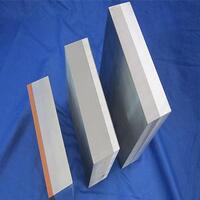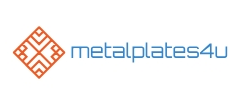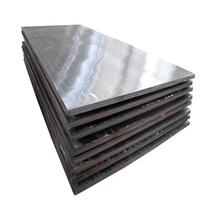1. Introduction
Just 24 hours ago, the U.S. Green Building Council announced a new pilot program incentivizing the use of recycled-content metal cladding in commercial projects—a move that underscores the growing importance of sustainable facade systems like corten steel siding and zinc clad roofs. With architects and builders increasingly prioritizing durability, aesthetics, and environmental impact, understanding what ‘metal clad’ really means—and how different clad metals stack up—is more relevant than ever.

At its core, the metal clad meaning refers to a composite material where a base metal is bonded with a layer of another metal to enhance performance, corrosion resistance, or appearance. This concept spans everything from exterior corrugated metal siding on a metal clad house to specialized clad metals like aluminum clad stainless steel used in aerospace. In this deep dive, we’ll unpack the most common metal clad types, compare their real-world applications, and clarify misconceptions about terms like clad metal meaning versus everyday usage in construction.
2. Understanding Clad Metals: Beyond the Surface
2.1. What Does ‘Clad Metal Meaning’ Really Encompass?
The term clad metals describes a bonded combination of two or more metals, typically created through roll bonding, explosion bonding, or electroplating. Unlike coatings—which sit on the surface—cladding integrates layers metallurgically, offering structural integrity along with enhanced properties. For example, stainless clad aluminum combines the light weight of aluminum with the corrosion resistance of stainless steel, making it ideal for marine or chemical environments.
Common industrial examples include titanium clad for heat exchangers, copper nickel clad for ship hulls, and even aluminum clad steel wire used in high-strength electrical applications. These aren’t just niche products—they’re engineered solutions where performance outweighs cost.
2.2. Metal Clad in Architecture: Facades, Roofs, and Walls

In construction, ‘metal clad’ usually refers to exterior systems: metal clad wall panels, metal clad roofs, and metal siding. These aren’t necessarily ‘clad metals’ in the metallurgical sense but are often single-metal sheets applied as cladding over insulation or framing. Still, the terminology overlaps, causing confusion.
Popular choices include:
- Corten steel facade: Known for its rust-like appearance that stabilizes over time, eliminating the need for painting. Corten steel siding cost ranges from $8–$15/sq.ft., making it a premium but low-maintenance option.
- Zinc facade: Offers a sleek, modern look with natural patina development. Zinc metal siding is highly recyclable and lasts 80+ years.
- Copper siding: Ages gracefully to a green patina; often used in high-end residential projects like a steel clad house seeking timeless elegance.
- Colorbond standing seam and PAC Clad standing seam roof systems: Pre-painted steel options that combine durability with design flexibility, including vertical standing seam metal siding for contemporary aesthetics.
3. Comparing Key Metal Clad Types in Building Applications
3.1. Steel-Based Systems: Strength Meets Versatility

Steel remains the backbone of metal clad buildings. Options like corrugated steel facade panels or standing seam siding offer high strength-to-weight ratios. Corten steel plate is favored for its weathering properties, while mild steel plate (often zinc coated) is common in sheds and industrial metal clad sheds.
PAC Clad HWP and PAC Clad coping systems provide architectural detailing for roofs and parapets, while steel plate price fluctuations impact project budgets—especially for thick steel plate or carbon steel plate used in structural bases.
3.2. Aluminum and Alloy Cladding: Lightweight and Corrosion-Resistant
Aluminum clad steel (or aluminium clad steel) is widely used in roofing and siding due to its light weight and resistance to rust. Aluminum diamond tread plate and aluminum checker plate (also called chequer plate) serve both functional and decorative roles—think stair treads or accent walls.
High-performance alloys like 6061-T6 aluminum plate or 5052 aluminum plate are used where strength and weldability matter. Meanwhile, aluminum sheet for sale in grades like 316 stainless steel sheet or 304L stainless steel plate caters to both architectural and industrial needs.
3.3. Specialty Clad Metals: Niche but Critical
Beyond common building materials, alloy clad systems like 2024-T3 clad or 7075-T6 clad aluminum are vital in aviation. In chemical processing, Inconel 625 weld overlay or chrome carbide overlay plates resist extreme wear. Even electrical systems rely on metal clad wire—such as CU clad wire or aluminum clad wire—for safe, shielded power delivery.
4. Practical Considerations: Cost, Installation, and Longevity
When choosing a metal clad type, consider lifecycle cost, not just upfront price. Corten siding cost may seem high, but it eliminates repainting. Zinc clad dormer elements last decades with zero maintenance. Conversely, exterior corrugated metal siding in galvanized steel is affordable but may require recoating over time.
Installation methods also vary: standing seam systems use hidden fasteners for clean lines, while metal weatherboard mimics traditional wood but with metal durability. Always verify compatibility—e.g., don’t pair aluminum cladding directly with copper without a barrier to prevent galvanic corrosion.
5. Conclusion
Whether you’re selecting a corten steel facade for a boutique hotel or specifying aluminum clad stainless steel for an industrial tank, understanding the nuances of metal clad materials is essential. From the broad metal clad meaning in manufacturing to the specific aesthetic of a zinc clad roof, each option offers unique trade-offs in cost, performance, and design. As sustainability drives innovation—like the USGBC’s new incentives—the future of metal cladding looks not just strong, but smart.
Our Website founded on October 17, 2012, is a high-tech enterprise committed to the research and development, production, processing, sales and technical services of ceramic relative materials such as What. Our products includes but not limited to Boron Carbide Ceramic Products, Boron Nitride Ceramic Products, Silicon Carbide Ceramic Products, Silicon Nitride Ceramic Products, Zirconium Dioxide Ceramic Products, etc. If you are interested, please feel free to contact us.
